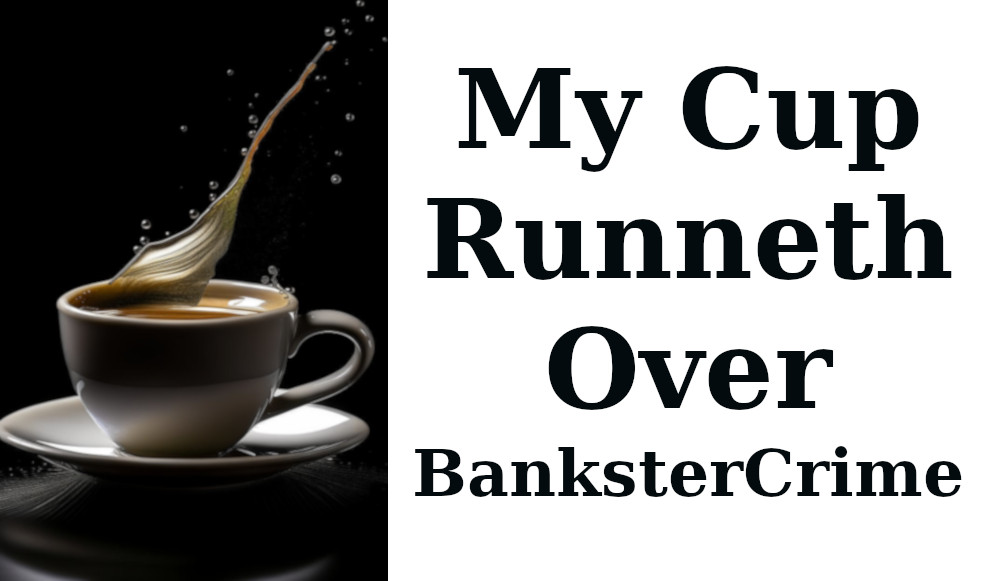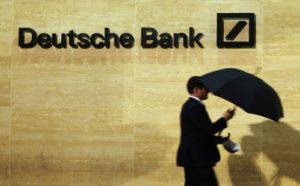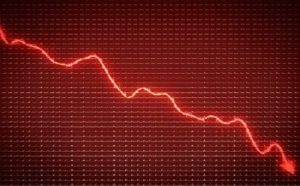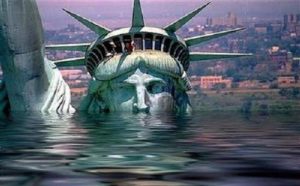Why Analysts Are Apprehensive About a Potential Us Banking Disaster…
The month of March 2024 is unsettling investors. One significant plan to support the US banking system is coming to an end, and another might be coming to an end. Some economic analysts are concerned about another banking catastrophe. How concerned should we then be?
The Federal Reserve, the US central bank, will terminate the bank term funding program (BTFP) on March 11, the red letter day. A year ago, the Federal Reserve initiated the program in response to the bankruptcies of regional banks like Silicon Valley, Silvergate, and Signature. Large-scale deposit withdrawals by consumers brought these banks down because many of the customers were tech or cryptocurrency enterprises in need of funds to offset losses and could find greater savings rates elsewhere.
By decreasing the value of their holdings in government bonds, this hurt the banks’ profitability at a time when rising interest rates had already undermined their balance sheets. Though Silicon Valley Bank’s failure on March 10 was especially noteworthy, Silvergate fell first. When Silvergate declared it needed to raise capital due to the forced sale of bonds at a loss, a bank run began.
Soon after, the Swiss banks Credit Suisse and Signature failed, forcing the neighboring behemoth UBS to take over. Although Credit Suisse has long-standing issues, the last straw was the increased unease following the US upheaval.
The BTFP’s operation
At that point, investors were afraid additional banks might fall. The majority of US banks shared a similar level of vulnerability to underwater bond portfolios and consumer withdrawals, as evidenced by Credit Suisse’s failure. The enabling US banks to borrow money from the central bank using their bonds as collateral, the Fed’s BTFP put an end to the panic.
This allowed them to covertly collect additional cash, and the plan valued the bonds at face value rather than market value. In effect, this reversed the increase in interest rates and increased the size of banks’ balance sheets. Since then, First Republic Bank in San Francisco has been the only other bank to fail.
What happens then, when the BTFP closes? It’s unlikely to cause further bank failures, in my opinion. In addition to having an additional year to get used to the higher interest rates, banks can still borrow money from the Fed through a different channel known as the discount window.
However, banks’ profit margins will certainly decline as a result of the BTFP’s shutdown, which will likely raise borrowing prices. In response, they might raise lending rates or reduce the amount of credit accessible to consumers, which could harm the economy. Combining this with another upcoming development could heighten the industry’s risks.
Quantitative compression
The Fed’s and other central banks’ quantitative easing (QE) program, which they implemented in the wake of the global financial crisis in 2007–2009, represents the second shift. In essence, they envisioned central banks printing money to purchase government bonds and other assets. As part of this procedure, they increased the reserves held by high-street banks, allowing these organizations to extend more loans.
In response to the pandemic, the most recent leg of QE started in March 2020 and ended in 2022 when central banks implemented a reverse program known as quantitative tightening (QT). This entails taking money from bond sales and other assets out of the financial system.
Despite its potential negative impact on the economy, a mechanism known as the “overnight reverse repurchase agreement,” or “overnight reverse repo,” has mitigated its effects. In essence, this makes it possible for financial institutions to trade government bonds for overnight deposits of their excess cash with their central bank. They increase the system’s liquidity by making additional money at very little risk.
Because QE and extraordinarily low loan rates brought so much cash into the system, the facility was very popular during that time. Because central banks have fewer bonds to offer and institutions have less money to park overnight, their utilization has been declining since late 2022.
Under a striking sky, the Federal Reserve
The withdrawal of quantitative easing has lessened its impact. MDart10
Daily balances at the Federal Reserve’s overnight reverse repo dropped to less than US$600 billion in January from over US$2.2 trillion (£1.7 trillion) in mid-2023. Nevertheless, the Fed won’t need to remove bank reserves as part of QT, as the overnight reverse repo is largely replacing the bonds leaving the program.
The system won’t experience the full effects of QT until the reverse repo balance drops to extremely low levels. At this point, the Fed has said that it will pause and eventually discontinue this program.
However, the shift might not go smoothly, with banks perhaps increasing lending rates and decreasing their willingness to lend. Many analysts think that the buffer will vanish in 2024; estimates range from late in the year to as early as March.
dangerous moments
In the US, higher interest rates have already resulted in the strictest credit requirements and the least amount of demand for loans from consumers and companies in a long time. Remote employment has led to a decline in office space demand, posing significant additional challenges for banks. This has, for example, driven the medium-sized New York Community Bank to the brink of failure in recent weeks.
It is obvious that banks may become even more risk-averse and profit-hungry in the wake of the BTFP shutdown and the termination of the reverse repo buffer, especially if they occur at the same time. The risk is that all of this weakens the economy to the point where bad debts mount and we see another liquidity crisis similar to the one that occurred in 2008, making banks reluctant to lend to each other and the weaker ones unviable.
The current geopolitical unrest poses another risk. If foreign investments and credit dry up, bad debt risks may rise, and bond prices may drop once again, further depreciating banks’ assets and raising the cost of borrowing. When Silicon Valley collapsed, a screenshot of the WSJ’s front cover
Silicon Valley Bank’s demise put investors on high alert. Domenico Fornas
The Fed and other central banks must prepare to stop QT soon and remain vigilant about these growing threats. Although it is doubtful that the BTFP’s termination will force banks out of business, it might be the first in a string of blows that spark a new crisis in the months to come.

Give the gift of great skin care. Our Soap and Shave Bars are gentle and produce a smooth creamy lather that is nourishing to your skin. They are handmade in small batches. We use only high-quality natural ingredients that you can pronounce. No chemicals, no sodium laurel sulfate, no phthalates, no parabens, no detergents. The set can include Soap Bar, Shave Bar, Shave Brush, and/or Shampoo Bar. These come in a white box and are perfect for your gift giving needs.
Our soaps are made with skin loving ingredients including olive oil, coconut oil, lard, sweet almond oil, shea butter, and castor oil. We do not use palm oil. Scented only lightly with fragrance oils.
The Shave bars give a very close and smooth shave with no razor burn. They leave your skin feeling amazing. A lather can be built up in your hands and then applied to your face, but it is best to use a shaving brush. These bars will only produce a thick foam when used with a shaving brush.
Our Shampoo Bars have a thick lather. A lather can be built up in your hands and then applied to your hair, but it is best to rub the bar gently in your hair. Rinse and repeat.
You choose a scent:
A Thousand Dreams is a whimsical blue scented in a warm mix of fruity and floral notes with peach, peony, lily, musk, sandalwood, and amber.
Bay Rum Spice is a nice masculine scent similar to Old Spice. The scent notes are clove, pine needles, cedarwood, orange, vanilla, and musk.
Birch Woods is a great outdoors-type scent. The notes are bergamot, patchouli, vetiver, and tonka bean.
Cool Clear Water is a refreshing scent. The notes are crisp water, oakmoss, pine, cedar, and musk.
Lavender Champagne has a wonderful scent of Lavender and Champagne and has a light purple color. The scent notes are lavender, sparkling Champagne, grapefruit, orange, thyme, oak, and amber.
Midnight Waters is a moody-mystical scent that opens with fruity notes of red berries, juicy tangerine, and bergamot. Then unfolds into bubbly Champagne, violet flowers, cashmere, amber, and musk.
Raspberry Vanilla is an all-time favorite fragrance for soap. It is a beautiful magenta color. The scent notes are raspberry, strawberry, lemon, coconut, peach, honeysuckle, plum, and vanilla.
Warm Sandalwood is a warm, rich, and woodsy scent. The colors are warm and rich with brown, gold, and white.
A Soap bar will weigh approximately 4 ounces and be approximately 2.25 inches wide by 3.5 inches tall and 1 inch thick. A Shave bar will weigh approximately 3 ounces and be approximately 2.5 inches across and 1.25 inches thick. A Shampoo Bar will weigh approximately 3.5 ounces and be approximately 2.5 inches across and 1.25 inches thick. Please keep in mind that our products are handmade and hand cut. Each bar is unique and might vary slightly in shape, size, design, and color from those pictured.
Please keep your Soap Bars, Shave Bars, and Shampoo Bars well-drained and allow to dry between uses. This will ensure longer lasting bars.
Allergen: Our products contain oil from tree nuts. Please test on a small area of skin prior to use and stop using if irritation occurs. Do not use if you are pregnant. Do not use on infants under the age of 24 months. Do not get in your eyes as it will sting slightly. GoShopping

![]()





